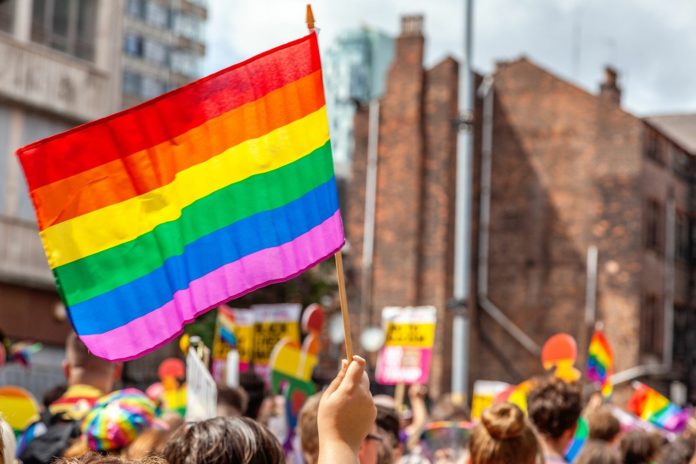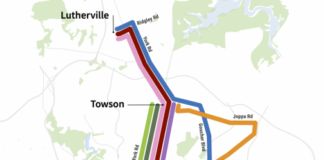
Pride in London takes place this weekend and 2022 is a significant one, with the festival hitting its 50th birthday. This year, the focus is on reflecting on the milestones in history of the queer community. The first ever museum to do this in the UK opened its doors in spring, and while the community continues to see queer spaces closing down (over 60% of London’s spaces have closed down in the last decade or so), learning from the past feels incredibly significant to keep moving forward. We look at where we can continue to educate ourselves on LGBTQ+ history as we travel — here are some of the places around the UK to learn more about the country’s queer past.
1. Queer Britain, London
The UK’s first national museum centering LGBTQ+ history and culture opened its doors to the public on 5 May 2022 in London’s King’s Cross. The charity behind the museum has been campaigning and fundraising since 2018 to create the only permanent space in Britain to celebrate and reflect on the lives of LGBTQ+ people, their stories and places. Inside, there are temporary exhibitions, immersive experiences, historical and queer artifacts spread across four galleries, as well as spaces for the community, a workshop, education space and a gift shop. It’s free to visit, open Wednesday to Sunday, from midday until 6pm.
2. Queer the Pier, Brighton
Launched in 2020, this exhibition is a community-curated endeavour that shines a light on the town’s LGBTQ+ past. The memorabilia here is inspired by writers, artists, performers, activists and locals in Brighton who are part of the community. Film, photography, oral histories and artifacts are found throughout, like the typewriter used by Peter Burton to document years of queer history for Gay Times. There’s a Queer Looks exhibition, too, which looks at LGBTQ+ identities through clothing, from the 1960s until today. It’s housed in the old stables in the Brighton Museum’s Pavilion and is running until March 2023. The exhibition is free with general admission to the museum or free to residents and members. Once the exhibition is over, there’s the Piers & Queers walking tour to join.
3. Edinburgh’s Queer History
Blue Badge Tourist Guide Hannah Mackay Tait runs a couple of walking tours of the Scottish city (the other focuses on Women’s History). For the Queer History tour, there’s over 90 minutes of walking in Edinburgh’s Old Town to rediscover the stories that history tried to erase and those that have shaped Scotland today. The walk takes in areas that unveil poignant moments in Scottish history from trans pioneers from the 19th century and activist queer booksellers to spots where the LGBTQ+ community fought against persecution of homosexuality. Hannah keeps accessibility in mind on the tours and while there are no steps or stairs, there are some slopes and cobbled streets on the route. More detailed descriptions of the places on the route are available for anyone with a visual impairment.
4. Bishopsgate Institute, London
The Bishopsgate Institute was established as a centre for learning and culture in 1895 and holds a large section of LGBTQ+ archives. It covers from the late 19th century onwards, including archives from Switchboard, Stonewall and the Terrence Higgins Trust and more. There’s also a section from the Lesbian and Gay Newsmedia Archive, which has some 300,000 press cuttings covering non-violent campaigns for action for the human rights of queer people, as well as from the UK Leather and Fetish Archives, which focuses on the history of kink, fetish and BDSM in the UK’s LGBTQ+ communities. Tours of the archives are available, but there are also talks, courses and walking tours.
5. Exploring LGBTQ+ history at National Trust spots, Kent and East Sussex
The National Trust explored its queer heritage with a series in 2017 called Prejudice and Pride, looking at its spaces that have been shaped by LGBTQ+ people who challenged conventions. Events and exhibitions were held, and while there hasn’t been any news of more emerging, the places steeped in queer history around East Sussex and Kent are still around to visit and to learn from. You can head to Monk’s House in East Sussex, a 16th-century country retreat for Virginia Woolf, which includes some of her personal items. Elsewhere, there’s Sissinghurst Castle Garden in Kent, which was founded by Vita Sackville-West and Harold Nicolson, whose open marriage carved out space for queer relationships in their lives.
Read more: Travelling with pride: how the travel industry is embracing LGBTQ+ travellers
6. Manchester Heritage Trail
Also called the Out in the Past Trail, this urban path through the northern city is marked by rainbow flag paving stones. There are more than a dozen important locations across the city that mark a point of queer history for Manchester. This one is a self-guided trail, so takes a little research in advance. For one that’s a little easier to follow, there’s the LGBTQ+ Walking Tour, which zones in on the history of Canal Street. The city became a forefront for change in the 1980s after nominating the first openly queer mayor candidate, Margaret Ross. Since then, Canal Street has been known as the Gay Village, with monuments, memorials and murals galore.
7. Queer History Walking Tour, London
Delivering a camp medley of storytelling, piano covers and original pop songs, Mark T Cox is a regular performer in London’s cabaret shows. As well as writing and starring in musicals, he runs a walking tour that covers a snippet of the complex LGBTQ+ history in London, including iconic people and places who have been central to the community. The tour focuses on the West End, predominantly Soho, which looks into the development of what has become one of the most known queer neighbourhoods in the world. The tours run for two hours every Sunday, with a Pay What you Can option.
Follow us on social media








